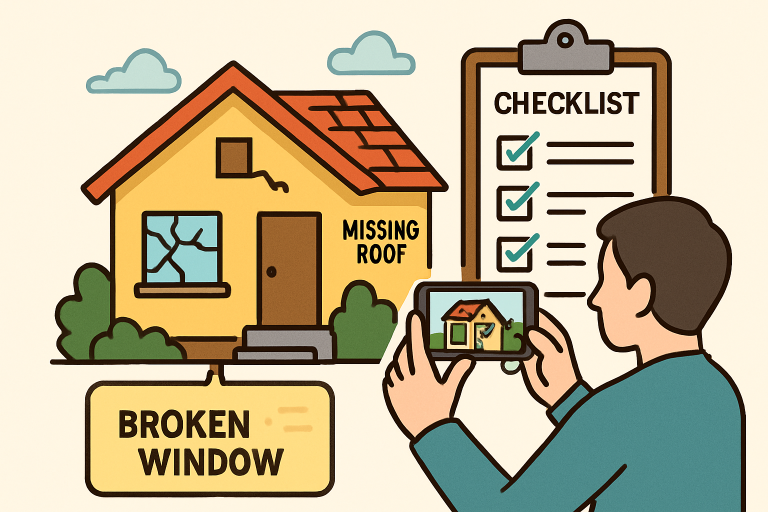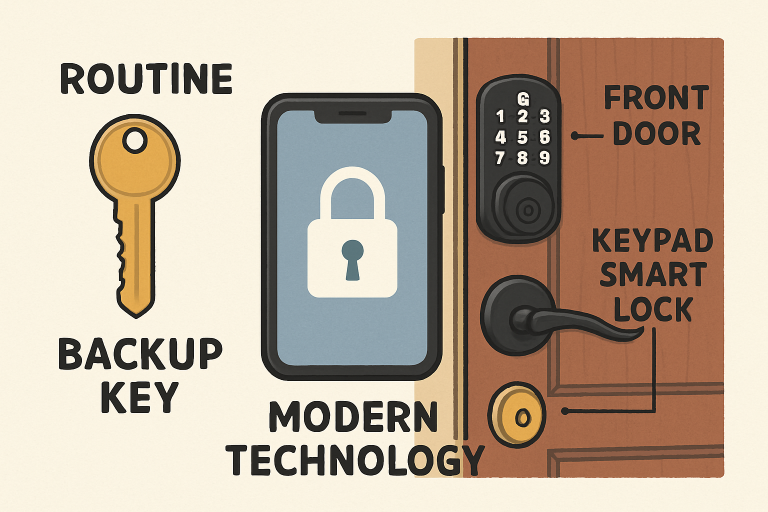
For years now, UX testing has been championed as one of the most effective ways to improve conversions, retain users, and build digital products people love. By 2025, you’d think companies would have nailed it. But time and again, the same mistakes keep showing up.
Some businesses run tests but never act on the insights. Others confuse UI checks with real usability studies. And many still test with the wrong users, at the wrong time, in the wrong way. The result? Wasted resources, lost conversions, and frustrated customers.
In this article, we’ll dive into the most common UX testing mistakes that companies are still making—and how you can avoid them.
Mistake 1: Treating UX Testing as a One-Time Project
One of the biggest missteps is thinking of UX testing as something you “do once and check off the list.” Companies will test before a big launch, gather insights, make a few tweaks, and then move on.
But user behavior changes. Technology evolves. Competitors introduce new features that reset user expectations. What worked six months ago may feel outdated today.
The fix: Treat UX testing as an ongoing process, not a one-time project. Build it into your product cycle. Test before launch, after launch, and with every major update. The best-performing companies see UX testing as a continuous loop of feedback, not a single milestone.
Mistake 2: Confusing UX Testing with UI Testing
It’s a classic mistake: checking whether the interface looks correct and calling it “UX testing.”
UI testing is important—it ensures that buttons look right, links work, and visual elements align with design guidelines. But UX testing digs deeper. It asks whether users can actually complete their goals without friction.
A beautiful design can still create a terrible experience if people can’t find what they need or get lost in the process.
The fix: Run both. Use UI testing to validate design consistency and functionality, but don’t confuse it with real UX testing. Only observing user behavior in context will show you how effective the experience truly is.
Mistake 3: Testing Too Late in the Process
Many companies wait until the product is nearly finished before running usability tests. At that stage, changes are expensive and time-consuming. Teams are reluctant to go back and rework entire flows.
The result? Problems get discovered too late—or worse, ignored.
The fix: Start testing early. Even low-fidelity wireframes or prototypes can provide valuable UX insights. Early testing makes changes easier and cheaper to implement. By the time you reach development, you’ll already have validated the core experience.
Mistake 4: Testing Without Clear Goals
Another mistake is running tests just for the sake of it, without knowing what you’re trying to learn. Companies gather piles of feedback that don’t connect to their actual business objectives.
For example, testing may reveal that users prefer a larger font—but if the real problem is high checkout abandonment, that insight doesn’t solve the issue.
The fix: Define clear goals for each test. Do you want to reduce drop-offs in the signup flow? Increase task completion rates? Improve navigation clarity? Having a specific objective ensures the test delivers actionable insights.
Mistake 5: Ignoring Mobile UX in Testing
It’s shocking how often companies still overlook mobile testing. In 2025, mobile isn’t “part of the audience”—it’s the primary platform for most industries. Yet many teams still run tests on desktop first, treating mobile as an afterthought.
This leads to checkout flows that are impossible on small screens, forms that don’t resize, and buttons that are too small to tap.
The fix: Prioritize mobile in your UX tests. Run every scenario—signups, purchases, navigation—on different devices and screen sizes. If the experience is painful on mobile, it doesn’t matter how polished it is on desktop.
Mistake 6: Using the Wrong Test Participants
Another common problem: testing with people who don’t represent your real users. Teams often recruit colleagues, friends, or whoever’s available. The result is biased feedback from people who already know too much about the product.
Your team might know the “hidden” steps of a checkout process, but new customers don’t. Testing with insiders masks real usability issues.
The fix: Recruit participants who actually represent your audience. If you’re building an ecommerce store for Gen Z, test with Gen Z. If you’re designing a tool for accountants, recruit accountants. The closer your participants match your target audience, the more valuable the insights.
Mistake 7: Overloading Users With Tasks
Sometimes companies try to squeeze too much into one test session. They ask participants to complete a dozen tasks in an hour, ranging from signing up to completing complex flows.
The problem? Test fatigue. Users lose focus, rush through tasks, and give less thoughtful feedback. You end up with surface-level data instead of meaningful insights.
The fix: Keep test sessions focused and manageable. Three to five core tasks are often enough to uncover the biggest issues. Multiple shorter sessions are more effective than one overloaded marathon.
Mistake 8: Ignoring Edge Cases and Diverse Users
Companies often test with “average” users, but real life is more complicated. Accessibility needs, different devices, slower internet connections—all of these affect the experience.
When UX testing ignores these scenarios, products may pass tests but fail in the real world.
The fix: Include diverse participants in your UX tests. Test with people who use assistive technologies. Run scenarios on slower connections. Check experiences across different languages and cultures. Real inclusivity comes from testing for all, not just some. Before you reach new people, learn the language better with English enrichment classes.
Mistake 9: Focusing Only on Success, Not Frustration
Many teams track whether users complete tasks, but not how they complete them. A user might finish a checkout, but if it took twice as long as it should have, or if they felt frustrated, that’s a UX failure in disguise.
The fix: Pay attention to emotions and effort, not just outcomes. Measure task completion time, number of clicks, and observe body language or tone in moderated sessions. Sometimes the pain is hidden beneath the surface of “success.”
Mistake 10: Not Following Up on UX Insights
Perhaps the most painful mistake of all: companies run tests, gather insights, create beautiful reports—and then never act on them.
It’s usually a mix of politics, competing priorities, or fear of redesign costs. But ignoring UX insights defeats the entire purpose of testing.
The fix: Create a clear workflow for implementing findings. Prioritize changes, assign responsibilities, and set timelines. Treat UX insights like gold, not like a nice-to-have.
Mistake 11: Running Tests Without Context
Sometimes teams run tests in artificial environments that don’t reflect how people actually use products. A quiet lab with perfect Wi-Fi doesn’t replicate the distractions, interruptions, and limitations of real life.
The result is data that looks positive but doesn’t match real-world behavior.
The fix: Whenever possible, test in realistic contexts. Remote usability testing allows participants to use their own devices in their own environments. This gives you a truer picture of how the product fits into their lives.
Mistake 12: Believing One Test Solves Everything
Finally, many companies assume that one round of UX testing will “solve” their usability problems. But UX isn’t static—it evolves as products grow, markets shift, and user expectations change.
The fix: Embrace iteration. One test is a snapshot in time. Real success comes from running multiple rounds, learning from each, and continuously refining.
The Cost of Getting UX Testing Wrong
These mistakes aren’t just technical errors—they’re business risks.
Every friction point left unresolved costs conversions. Every accessibility oversight risks alienating customers. Every delayed test makes fixes more expensive.
In competitive markets, users don’t wait. If your experience frustrates them, they’ll move on to a competitor. The hidden cost of poor UX testing isn’t just wasted development—it’s lost revenue and eroded trust.
Best Practices to Avoid UX Testing Pitfalls
To wrap up, here are a few guiding principles to keep UX testing on track:
- Start early and keep testing often.
- Recruit participants who truly reflect your audience.
- Prioritize mobile and accessibility from the beginning.
- Keep test sessions short and focused.
- Look beyond outcomes to effort, emotion, and frustration.
- Act on insights quickly and systematically.
UX testing is powerful, but only if done right. Avoiding these common mistakes will ensure you get insights that actually improve experiences—and conversions.
Final Thoughts: Learning From Mistakes
UX testing has been around for decades, yet companies in 2025 still repeat the same errors. The difference between teams that thrive and teams that stagnate is simple: the best ones learn. They test early, test often, and use insights to make real changes.
If your company is still making these mistakes, you’re not alone. But the good news is, fixing them is within reach. Start small, stay consistent, and treat UX testing as a living, breathing part of your product strategy.
Because in the end, good UX isn’t about perfection—it’s about progress. And every avoided mistake is a step closer to creating products that truly work for the people who use them.













